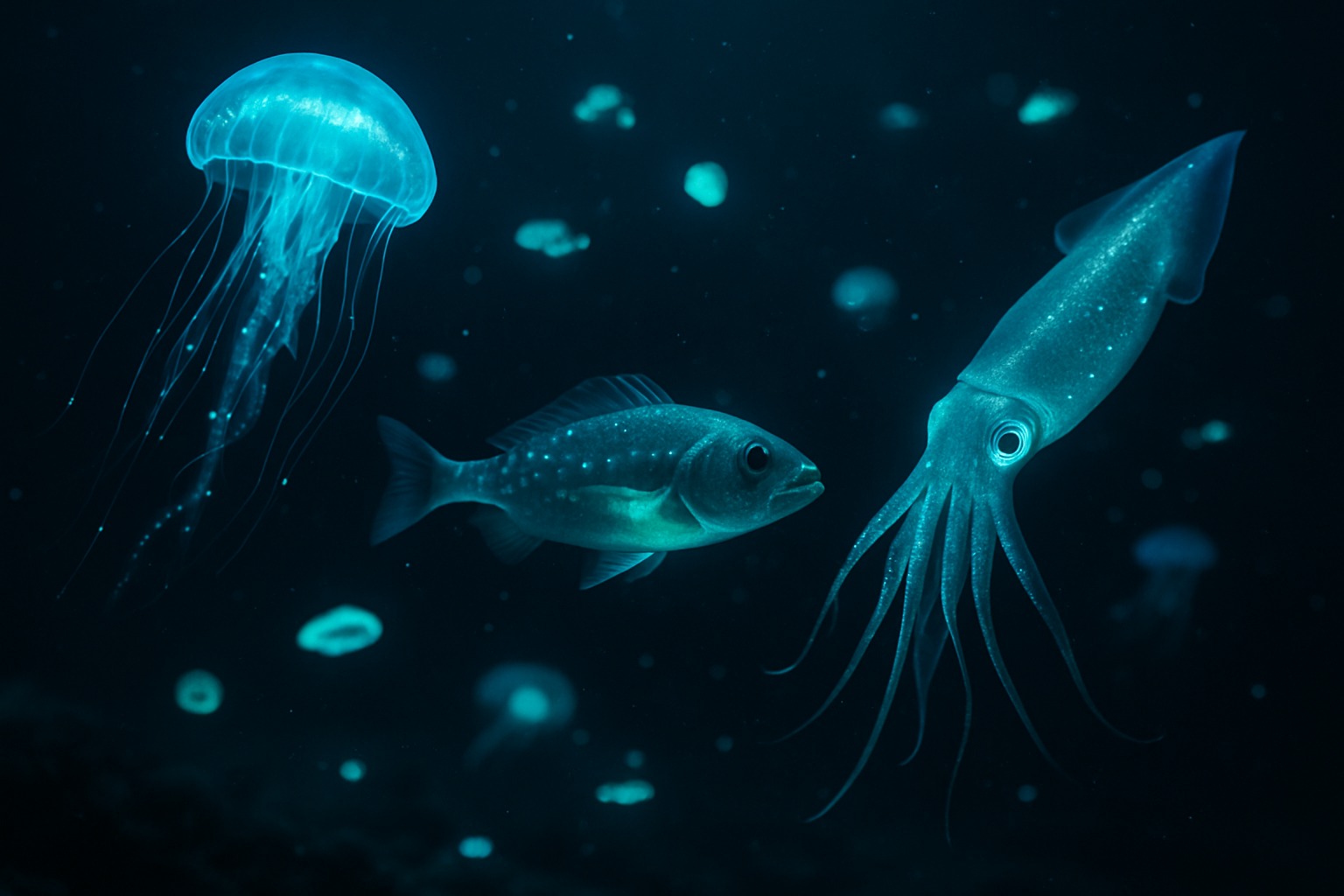Unraveling the Mysteries of Bioluminescent Marine Life
Beneath the ocean's surface lies a mesmerizing world of living light. Bioluminescent marine organisms have captivated scientists and nature enthusiasts for centuries, illuminating the depths with their ethereal glow. This article delves into the fascinating realm of bioluminescence in marine life, exploring its evolution, mechanisms, and ecological significance.

The Science Behind Marine Bioluminescence
Bioluminescence in marine organisms is a complex biochemical process involving the interaction of several compounds. At its core, the light-producing reaction requires a light-emitting molecule called luciferin and an enzyme called luciferase. When these components interact in the presence of oxygen, they produce a chemical reaction that releases energy in the form of light.
Different species have evolved unique variations of this basic mechanism. Some organisms, like certain species of dinoflagellates, produce light when physically disturbed, creating the stunning effect of glowing waves. Others, such as deep-sea anglerfish, have specialized light-producing organs called photophores that they can control at will.
Evolutionary Marvels: Adaptations and Functions
The evolution of bioluminescence in marine life is a testament to nature’s ingenuity. This ability has developed independently in various lineages, demonstrating its adaptive value in the ocean environment. Bioluminescent organisms use their light-producing capabilities for a range of purposes, each finely tuned to their specific ecological niche.
For many species, bioluminescence serves as a form of communication. Deep-sea creatures use light patterns to attract mates, warn off predators, or lure prey. Some squid species employ counter-illumination, matching the light from above to blend in with their surroundings and avoid detection by predators below.
In other cases, bioluminescence acts as a defense mechanism. When threatened, certain jellyfish and plankton species emit bright flashes of light, startling potential predators or drawing attention to larger threats in the area. This survival strategy helps protect these often vulnerable organisms in the vast ocean expanse.
Bioluminescent Hotspots: Where to Witness the Glow
While bioluminescence occurs throughout the world’s oceans, certain areas are renowned for their spectacular displays. These bioluminescent hotspots attract researchers and tourists alike, offering unforgettable experiences of nature’s light show.
One famous location is Mosquito Bay in Vieques, Puerto Rico, often called the brightest bioluminescent bay in the world. Here, high concentrations of dinoflagellates create a dazzling blue glow in the water when disturbed. Similar phenomena can be observed in the Luminous Lagoon in Jamaica and Jervis Bay in Australia.
For those seeking deeper ocean bioluminescence, specialized deep-sea expeditions offer glimpses of bizarre and beautiful light-producing creatures. These trips, while costly (often ranging from $5,000 to $50,000 depending on duration and destination), provide unparalleled opportunities to witness rarely seen bioluminescent species in their natural habitats.
Ecological Importance and Environmental Concerns
Bioluminescence plays a crucial role in marine ecosystems, influencing predator-prey relationships, mating behaviors, and even large-scale oceanic processes. The vertical migration of bioluminescent plankton, for instance, contributes significantly to the ocean’s carbon cycle by transporting carbon to deeper waters.
However, these delicate ecosystems face threats from human activities. Light pollution from coastal development can disrupt the natural rhythms of bioluminescent organisms. Climate change and ocean acidification also pose risks, potentially altering the chemical conditions necessary for bioluminescent reactions.
Conservation efforts are underway to protect these unique ecosystems. Some bioluminescent bays have implemented strict visitor regulations and lighting restrictions to minimize human impact. Ongoing research aims to better understand the ecological requirements of bioluminescent species and develop effective conservation strategies.
Harnessing Nature’s Glow: Applications and Future Prospects
The study of marine bioluminescence extends beyond ecological interests, offering exciting possibilities in various fields. Researchers are exploring ways to harness this natural phenomenon for practical applications, opening up new frontiers in biotechnology and medical research.
One promising area is the development of bioluminescent imaging techniques for medical diagnostics. By adapting the light-producing mechanisms of marine organisms, scientists have created tools to visualize cellular processes in living tissues, aiding in cancer research and drug development.
In the realm of environmental monitoring, bioluminescent organisms serve as sensitive indicators of water quality. Certain species react to pollutants by altering their light production, potentially offering a natural and efficient method for detecting marine contamination.
The future of bioluminescence research holds immense potential. From creating sustainable light sources inspired by nature to developing new therapies based on bioluminescent mechanisms, the applications seem boundless. As our understanding of these glowing marine organisms deepens, so too does our appreciation for the intricate and illuminating world beneath the waves.





